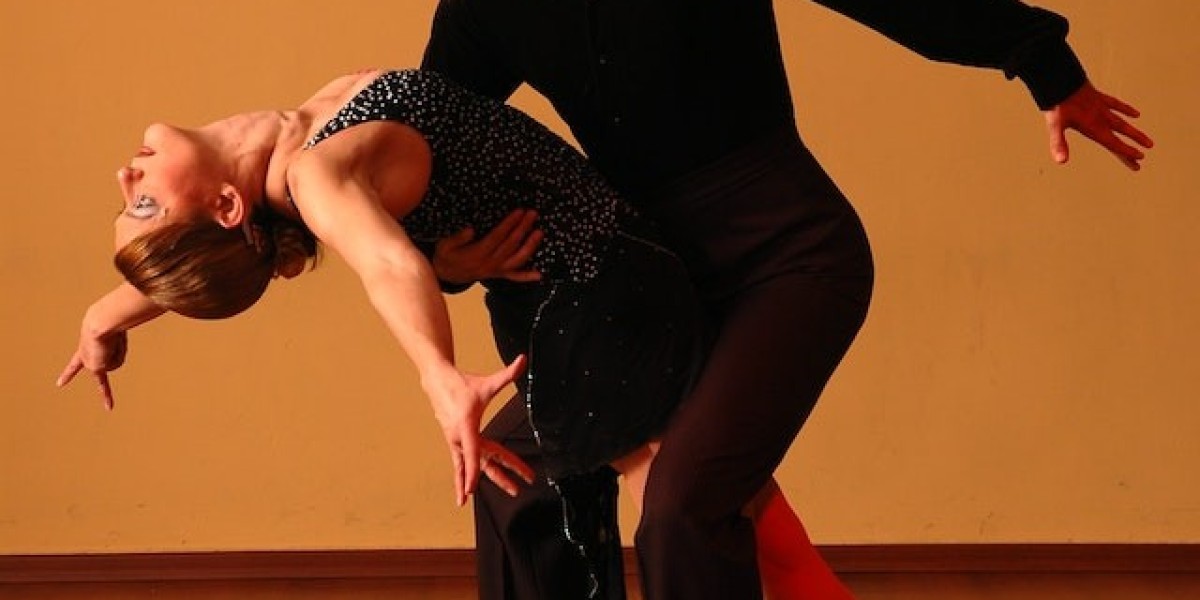Ballroom dancing is a captivating and elegant art form that has charmed people around the world for generations. It combines music, movement, and intricate choreography to create beautiful and harmonious performances. In this guide, we will take you on a journey into the enchanting world of ballroom dances introducing you to some of the most popular styles and highlighting the joy and grace they bring to dancers and audiences alike.
A Glimpse into the World of Ballroom Dancing
Ballroom dancing encompasses a wide range of partner dances that are typically performed at social events, competitions, or for personal enjoyment. Here are some of the most iconic ballroom dances:
1. Waltz
Characteristics: The waltz is known for its smooth and flowing movements. Dancers move gracefully in 3/4 time, gliding in a closed position.
Music: Waltz music is characterized by its romantic and sweeping melodies, making it a favorite for weddings and formal occasions.
2. Tango
Characteristics: Tango is passionate and dramatic, with sharp staccato movements and intense expressions. Dancers maintain a close embrace and move in quick, precise steps.
Music: Tango music is characterized by its moody and melancholic melodies, creating a sense of intensity and intrigue.
3. Foxtrot
Characteristics: The foxtrot is a smooth dance characterized by long, flowing movements. It combines slow and quick steps and often includes playful elements.
Music: Foxtrot music is typically upbeat and jazzy, providing a cheerful and lighthearted atmosphere.
4. Rumba
Characteristics: Rumba is a sensual and romantic dance with slow, controlled movements and subtle hip action. It emphasizes the connection between partners.
Music: Rumba music is characterized by its sensual and rhythmic beats, creating a passionate and intimate ambiance.
5. Cha-Cha
Characteristics: Cha-cha is a lively and energetic dance with quick, syncopated steps. It incorporates playful hip and footwork, often featuring dramatic pauses.
Music: Cha-cha music is characterized by its infectious Latin rhythms, inspiring lively and joyful dancing.
6. Salsa
Characteristics: Salsa is a vibrant and lively dance with fast footwork, spins, and dynamic partner interactions. It encourages improvisation and spontaneity.
Music: Salsa music is characterized by its catchy rhythms and lively percussion, creating a festive and energetic atmosphere.
Learning Ballroom Dancing
Whether you're a beginner or have some dance experience, learning ballroom dancing can be a rewarding and enjoyable pursuit. Here's how you can get started:
Find a Dance Studio: Look for a reputable dance studio or instructor in your area that offers ballroom dance classes.
Choose Your Style: Decide which ballroom dance style appeals to you the most. You can start with one style and explore others as you progress.
Take Beginner Classes: Enroll in beginner-level classes to learn the basic steps, techniques, and posture for your chosen dance style.
Practice Regularly: Practice is essential for improving your skills. Find a practice partner or attend social dance events to refine your abilities.
Consider Private Lessons: Private lessons with a skilled instructor can provide personalized guidance and accelerate your progress.
Participate in Social Dancing: Joining social dance events or clubs allows you to apply what you've learned and enjoy dancing with others.
The Joy of Ballroom Dancing
Ballroom dancing offers numerous benefits beyond the physical exercise and artistic expression:
Connection: It fosters a strong connection between dance partners, requiring communication, trust, and synchronization.
Stress Relief: Dancing provides an outlet for stress relief and can boost your mood and confidence.
Physical Fitness: Ballroom dancing is a great way to stay physically active and improve balance, coordination, and flexibility.
Social Interaction: It provides opportunities to meet new people, make friends, and become part of a vibrant dance community.
Artistic Expression: Ballroom dancing allows you to express your creativity and emotions through movement and music.
Beginner's Guide to Tap Dancing: Making Music with Your Feet
Tap dancing is a rhythmic and joyful form of dance that allows you to create music with your feet. Whether you're a complete beginner or have some dance experience, learning to tap dance can be a fun and rewarding journey. In this guide, we'll introduce you to the basics of tap dancing, including essential steps, tips for beginners, and how to get started on your tap dancing adventure.
Understanding Tap Dancing
Tap dancing is characterized by the use of special shoes with metal taps on the soles. These metal taps produce distinctive percussive sounds when they come into contact with the floor, allowing dancers to create intricate rhythms and patterns. Here are some key elements of tap dancing:
1. Tap Shoes: Tap shoes have metal plates or taps on both the heel and the toe. The type of sound and rhythm produced depends on how and where these taps strike the floor.
2. Rhythm and Timing: Tap dancing is all about rhythm and timing. Dancers use their feet to create various rhythms, syncopations, and patterns, often accompanied by music.
3. Artistic Expression: While tap has a strong focus on rhythm, it also allows for creative expression and improvisation. Dancers can develop their unique style and add their personality to their performances.
Getting Started with Tap Dancing
If you're eager to start tap dancing, here's a step-by-step guide for beginners:
1. Find a Tap Class:
- Look for dance studios or community centers in your area that offer tap dance classes.
- Make sure the class is suitable for beginners, as some may cater to more advanced dancers.
2. Get the Right Shoes:
- Invest in a pair of proper tap shoes. Beginner shoes typically have a low heel and are comfortable for learning basic steps.
3. Dress Comfortably:
- Wear clothing that allows you to move freely. Loose-fitting pants or leggings and a fitted top are common choices.
4. Warm-Up:
- Start each practice session with a warm-up routine to stretch and prepare your muscles.
5. Learn Basic Tap Steps:
- In your beginner's class, you'll start with fundamental tap steps, such as the "shuffle," "flap," "brush," and "heel drop."
- Pay close attention to your instructor's demonstrations and practice these steps regularly.
6. Practice Rhythm:
- tap dancing for beginners is all about rhythm. Practice counting beats and understanding the timing of your steps.
7. Build Technique:
- Focus on developing proper technique, including posture, foot placement, and clarity of sound.
8. Progress Gradually:
- As you become more comfortable with basic steps, your instructor will introduce more complex combinations and routines.
9. Practice Regularly:
- Consistent practice is key to improving your tap skills. Dedicate time each day or week to practice your steps and routines.
10. Enjoy the Journey:
- Tap dancing is a joyful and expressive art form. Embrace the process, have fun, and express yourself through your dancing.
Tips for Tap Dancing Beginners
- Start with a beginner's class to learn proper technique and avoid developing bad habits.
- Focus on your footwork and listen to the sounds your taps create. Pay attention to the nuances of each step.
- Use a mirror to check your posture and alignment while practicing.
- Don't be discouraged by mistakes or missed steps. Learning to tap dance takes time and patience.
- Record your practice sessions to review your progress and identify areas for improvement.
Remember that tap dancing is not just about creating rhythms with your feet; it's also about self-expression and enjoying the sheer joy of making music through dance. As you continue your tap dancing journey, you'll discover the unique rhythm that flows from your heart to your feet, creating a truly magical experience. So put on your tap shoes and start tapping your way to a world of rhythmic delight!







